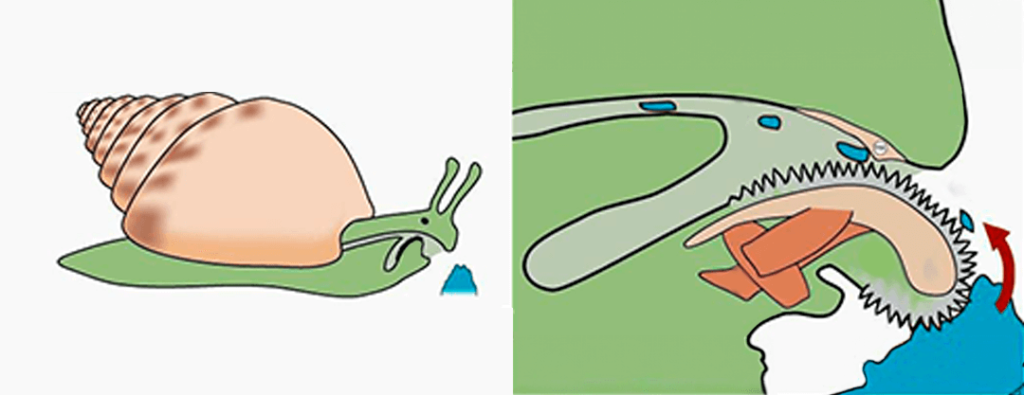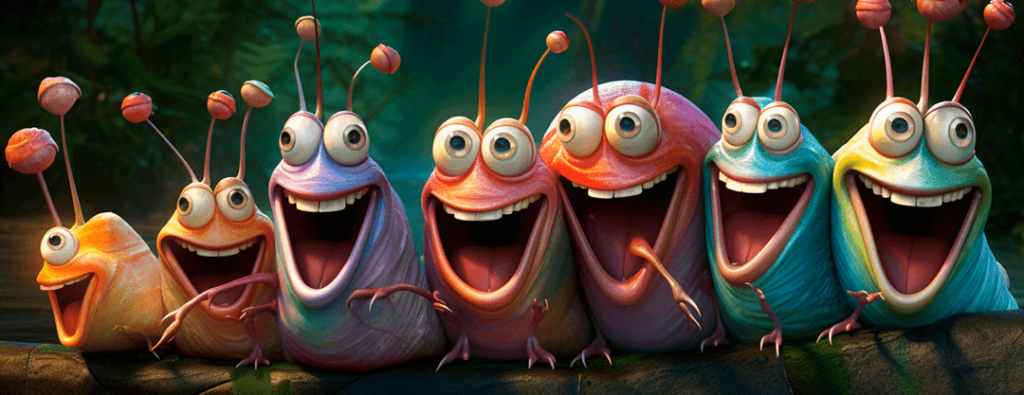Have you ever pondered the dental mysteries of snails? It might sound peculiar at first, but the world of Snail Teeth is a microscopic marvel waiting to be unveiled. So, do snails have teeth? In short, yes! However, these aren’t your typical pearly whites. Snails boast a unique dental apparatus called a radula—a tongue-like ribbon adorned with thousands of microscopic teeth. In this exploration, we’ll not only answer the burning question but also dive deep into the intriguing world of snail teeth.
The Radula: Nature’s Dental Ribbon

Contrary to the conventional image of teeth, snails showcase their dental prowess through a structure called a radula. Imagine a tiny, tongue-like ribbon equipped with thousands of minuscule teeth neatly arranged in rows. This extraordinary tool is the key to understanding how snails adapt their diet, whether it involves munching on plants, hunting for prey, or devouring detritus.
Snail Dentition: The Symbiotic Dance of Radula and Jaw
The radula, while fascinating on its own, doesn’t operate in isolation. It collaborates with the snail’s jaw, creating a symbiotic dance in the intricate world of snail dentition. Picture the radula as a scraper, diligently working to process food, while the jaw serves as a cutter. The jaw slices larger pieces of food, making it easier for the microscopic teeth on the radula to execute their intricate duties.
So, how many teeth does a snail have? The number varies among species, but it can range from a few dozen to thousands. This diversity in tooth count contributes to the adaptability of snails in different environments and diets.
Observing Snail Teeth in Action

To truly appreciate the marvels of snail dentition, researchers at Glendale Community College took a hands-on approach. They developed a unique method to observe and document the feeding process of a Common European Garden Snail. Through this method, the researchers not only brought the microscopic teeth into the spotlight but also emphasized the importance of understanding snail dentition for distinguishing between different snail species.
Microscopic Marvels: A Close Examination of a Slug’s Radula
Intern Ole Willadsen took the exploration a step further by dissecting the radula from a non-native slug found in Los Angeles. Armed with a scanning electron microscope (SEM), detailed images of the central and marginal radular teeth were captured. These microscopic examinations provided profound insights into the structural diversity among snail species, showcasing the intricate beauty of their dental adaptations.
The Significance of Snail Teeth in Species Identification
The microscopic wonders of snail dentition go beyond fascination—they have practical implications, particularly in species identification. The differences in tooth arrangement and size, as revealed by detailed examinations, become crucial for identifying and classifying various snail species. This knowledge empowers researchers and enthusiasts to distinguish one species from another based on the nuances of their dental features.
The Ecological Role of Snail Teeth
The marvel of Snail Teeth extends beyond the confines of research labs. Understanding the ecological significance of identifying snail species becomes vital for maintaining balance in ecosystems. Different snail species play distinct roles—some contribute to pest control, while others may pose potential threats to local flora and fauna.
Non-Native Slugs: Impact on Urban Environments
The exploration of Snail Teeth takes on a practical dimension when considering non-native slugs in urban environments. Being aware of these creatures becomes imperative for preventing disruptions to local ecosystems. Unchecked, non-native slugs can disturb the delicate balance, making it essential for communities to implement measures for their control and conservation.
The Intricate Dance of Snail Dentition in Biodiversity

As we marvel at the intricacies of Snail Teeth, it’s crucial to recognize its role in biodiversity. The adaptability and diversity of these tiny dental structures contribute significantly to the overall health and balance of ecosystems. Understanding the specifics of snail dentition allows us to appreciate the nuanced relationships between these gastropods and their environment.
Snail Teeth and Ecosystem Dynamics
Delving into the world of snail dentition leads us to a broader understanding of ecosystem dynamics. The feeding habits of snails, guided by their microscopic wonders, influence the delicate balance of nature. From nutrient cycling to vegetation management, snail dentition plays an indispensable role in shaping the environments they inhabit.
Snail Teeth in Scientific Research
The microscopic wonders of snail dentition have not escaped the attention of scientific researchers. Beyond mere curiosity, studies on snail dentition provide valuable insights into evolutionary processes and ecological adaptations. Researchers analyze the structure and function of these tiny teeth to unlock secrets that may have broader implications for understanding life on Earth.
Trust Dental Care: A Note on Oral Health
Before we wrap up our exploration of snail dentition, let’s draw a parallel to a different context—human oral health. Just as snails rely on their microscopic wonders for survival, humans depend on their teeth for various functions, including chewing and overall well-being. Visit Trust Dental Care for a comprehensive dental check-up! Experience top-notch dental care where our skilled professionals are dedicated to your oral health. Schedule your appointment today and ensure your teeth receive the care they deserve.

In conclusion, snail dentition, with its microscopic marvels, offers a window into the intricate world of gastropod anatomy. The radula’s adaptability and efficiency showcase the brilliance of nature’s design. This exploration not only satisfies our curiosity about snail dentition but also contributes to a broader understanding of biodiversity, ecosystem management, and the importance of oral health—both in snails and humans. The next time you encounter a snail, take a moment to appreciate the unseen wonders within its tiny, toothy world. And for your own set of teeth, don’t forget to schedule that dental check-up at Trust Dental Care!



